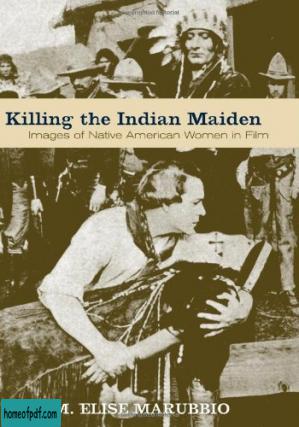Killing the Indian Maiden: Images of Native American Women in Film
该资源由用户: 一条小学成 上传 举报不良内容

尊敬的读者:
欢迎您访问我们的网站。本站的初衷是为大家提供一个共享学习资料、交换知识的平台。每位用户都可以将文件上传至网盘并分享。
然而,随着用户上传的资料增多,我们发现部分不宜或版权问题的书籍被分享到了本站。
为此,我们已经关闭了分享入口,并进行了多次书籍审查,但仍有部分内容未能彻底审查到位。
在此,我们恳请广大读者与我们共同监督,如发现任何不宜内容,请 点击此处 进行举报,我们会第一时间处理并下架相关内容。
希望我们能共建一个文明社区!感谢您的理解与支持!
扫一扫即可关注本站(PDF之家)微信公众账号
发送您想要找的书籍名称即可找到书籍

本站为非盈利性网站, 但服务器成本高昂, 如果本站内容对您有帮助, 欢迎捐赠, 您的鼓励是我们最大的动力!
声明
本站资源来源于网络及个人用户网盘上传,仅用于分享知识,学习和交流! 本站不保存,不制作,不出售任何图书。请您下载完在24小时内删除。 资源禁用于商业用途!如果您喜欢本站资源,请购买正版,谢谢合作!
扫码支持一下:


猜你喜欢

《20堂神奇的专注力训练课:3分钟专注塑造一生的成功》希伦·杜蒙中文版
View more
Theoretical Aspects of Object-Oriented Programming - Carl A. Gunter and JohnC.Mitchell
View more
《完美嫌疑人》陈研一
View more
《写给管理者的读人笔记》胡炜
View more
《21天学通C++(第7版)》 [美] Bradley Jones / Peter Aitken / Dean Miller 中文版
View more
ZooKeeper - Flavio Junqueira and Benjamin Reed
View more
《减肥自我按摩图解》 葛书翰/(日)长尾良一主编文字版
View more
《制度是最好的老板,流程是最好的管理》赵涛,孙健经典版
View more
《社交天性》马修·利伯曼
View more
Mastering Kafka Streams and ksqlDB - Mitch Seymour
View more
《历史就这七八样》张发财
View more
